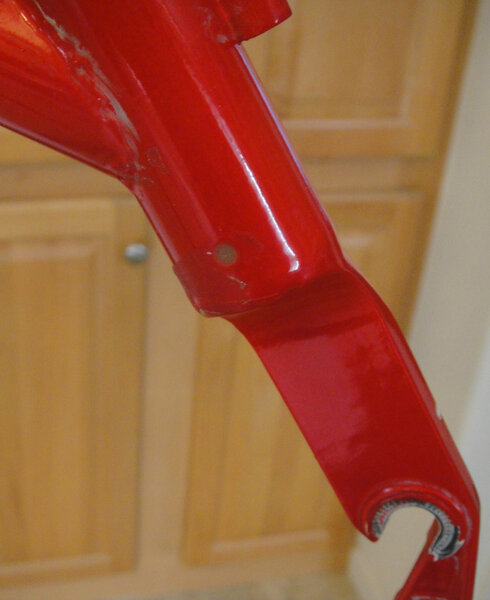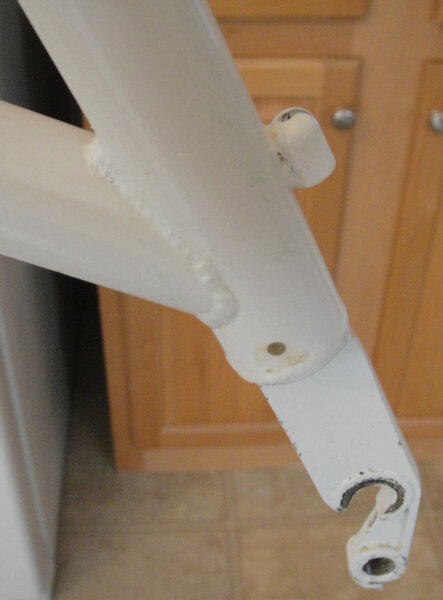incorrigible
Senior Retro Guru
- Feedback
- View
You know those little holes at the top and bottom of chainstay and seatstay tubing? I’ve heard they are referred to as “weep holes”, and that the reason they are there to begin with is to release hot gasses during the welding process, and the reason that some holes are near the bottom of the tubing is so that any water or condensation that may have entered the finished frame (at any time in its life) can drain and allow the frame to dry out.
I was cleaning up a couple of large Alpinestars Cro-Mega frames, and I noticed epoxy had been used to plug the bottom weep holes on the drive-side seatstay on both bikes, although I acquired these bikes from different sellers, so I’m wondering if epoxy is applied at the factory for some reason. No other holes have been epoxied on either frame. In addition, I have other Cro-Mega frames that don’t have any of the weep holes plugged, although they are smaller frames.
I also have a Nishiki cromoly frame that has ALL weep holes sealed with epoxy, and seller said he knew nothing about it, and I have identical Nishiki frames that don't have any holes epoxied.
Sealing holes that are there for drainage and aeration purposes seems outright wrong to me, but perhaps there is a reason for this? :?
Sorry in advance for my ignorance on this matter, and thanks in advance for the insight and sage advice from the RB collective.
A couple of pics, here:
I was cleaning up a couple of large Alpinestars Cro-Mega frames, and I noticed epoxy had been used to plug the bottom weep holes on the drive-side seatstay on both bikes, although I acquired these bikes from different sellers, so I’m wondering if epoxy is applied at the factory for some reason. No other holes have been epoxied on either frame. In addition, I have other Cro-Mega frames that don’t have any of the weep holes plugged, although they are smaller frames.
I also have a Nishiki cromoly frame that has ALL weep holes sealed with epoxy, and seller said he knew nothing about it, and I have identical Nishiki frames that don't have any holes epoxied.
Sealing holes that are there for drainage and aeration purposes seems outright wrong to me, but perhaps there is a reason for this? :?
Sorry in advance for my ignorance on this matter, and thanks in advance for the insight and sage advice from the RB collective.
A couple of pics, here:

